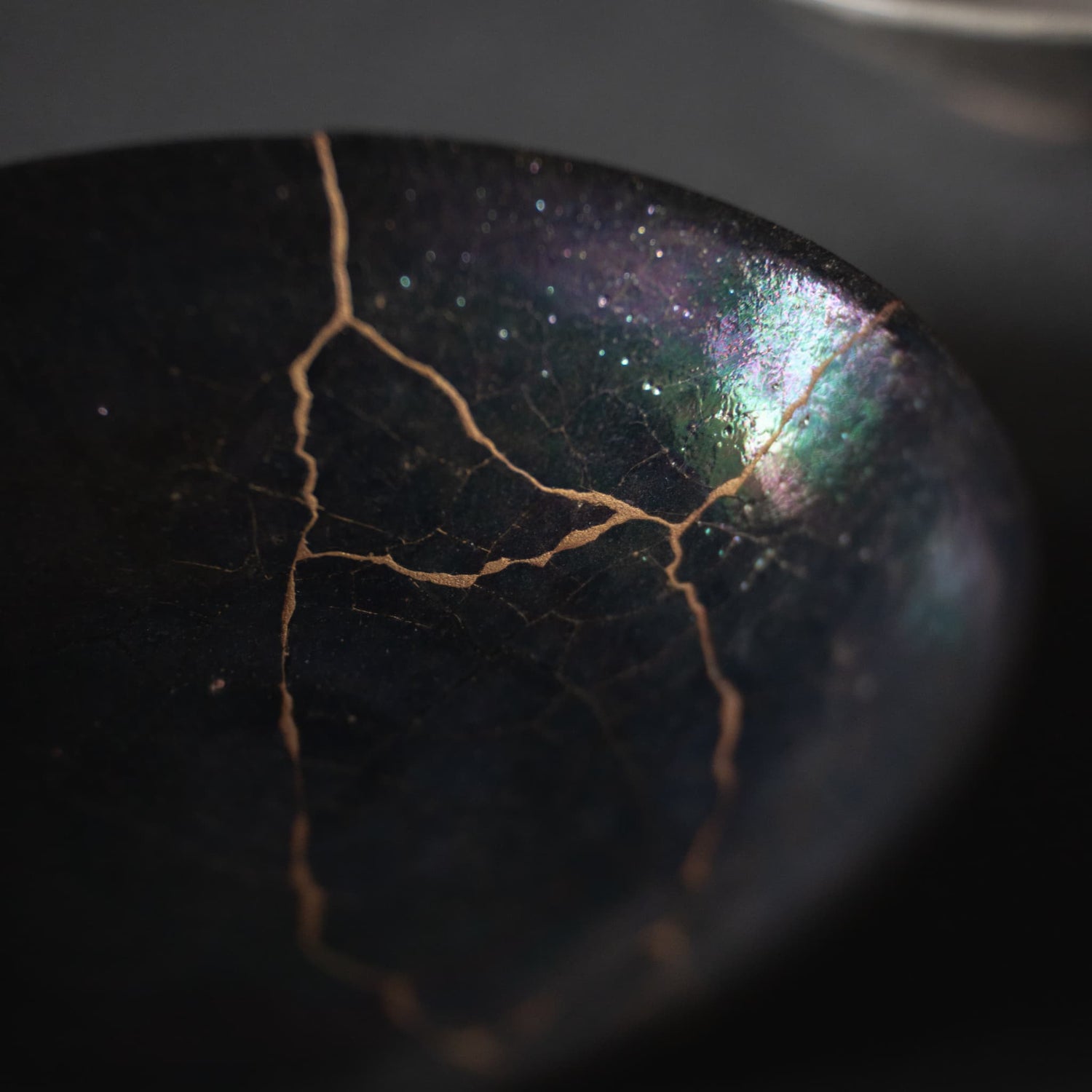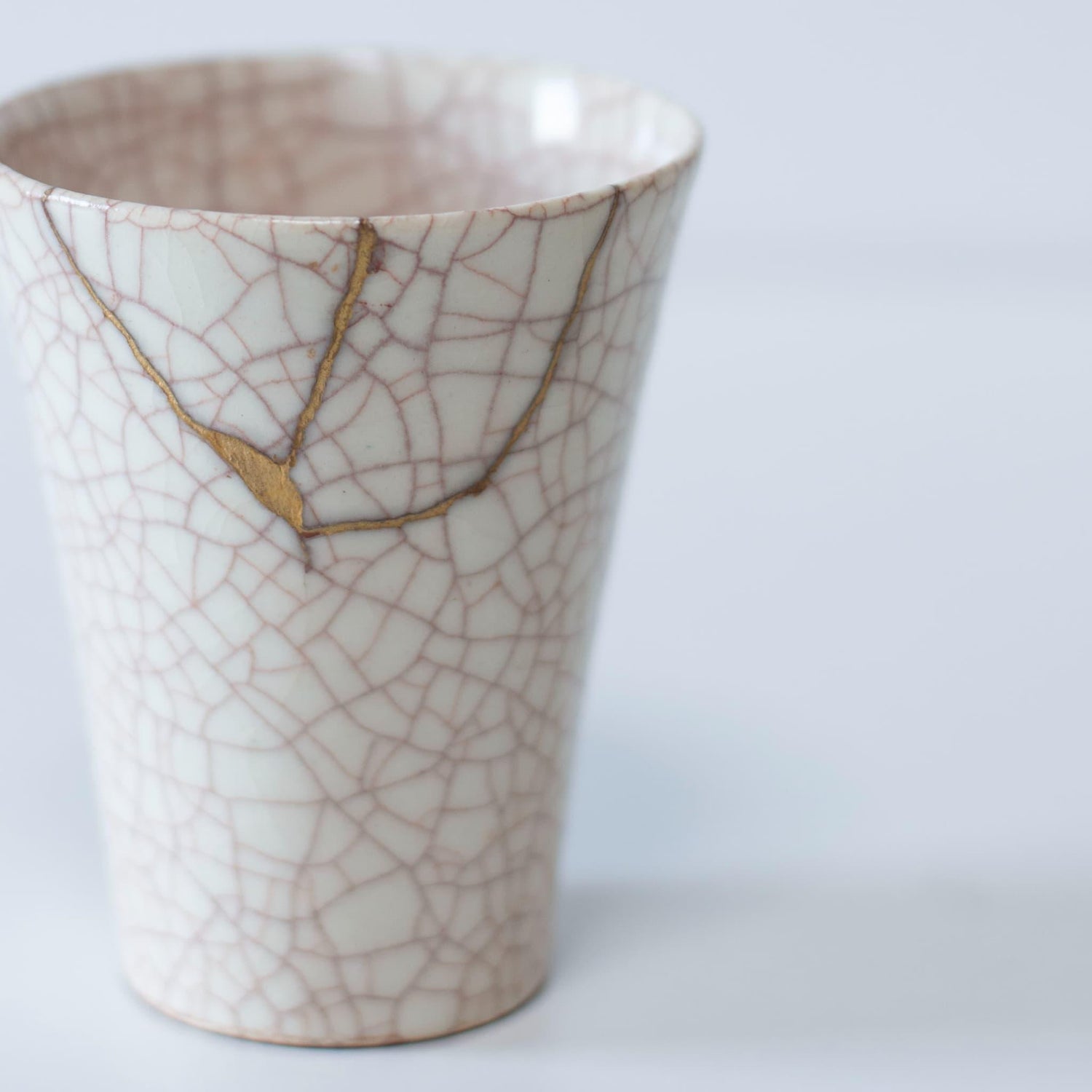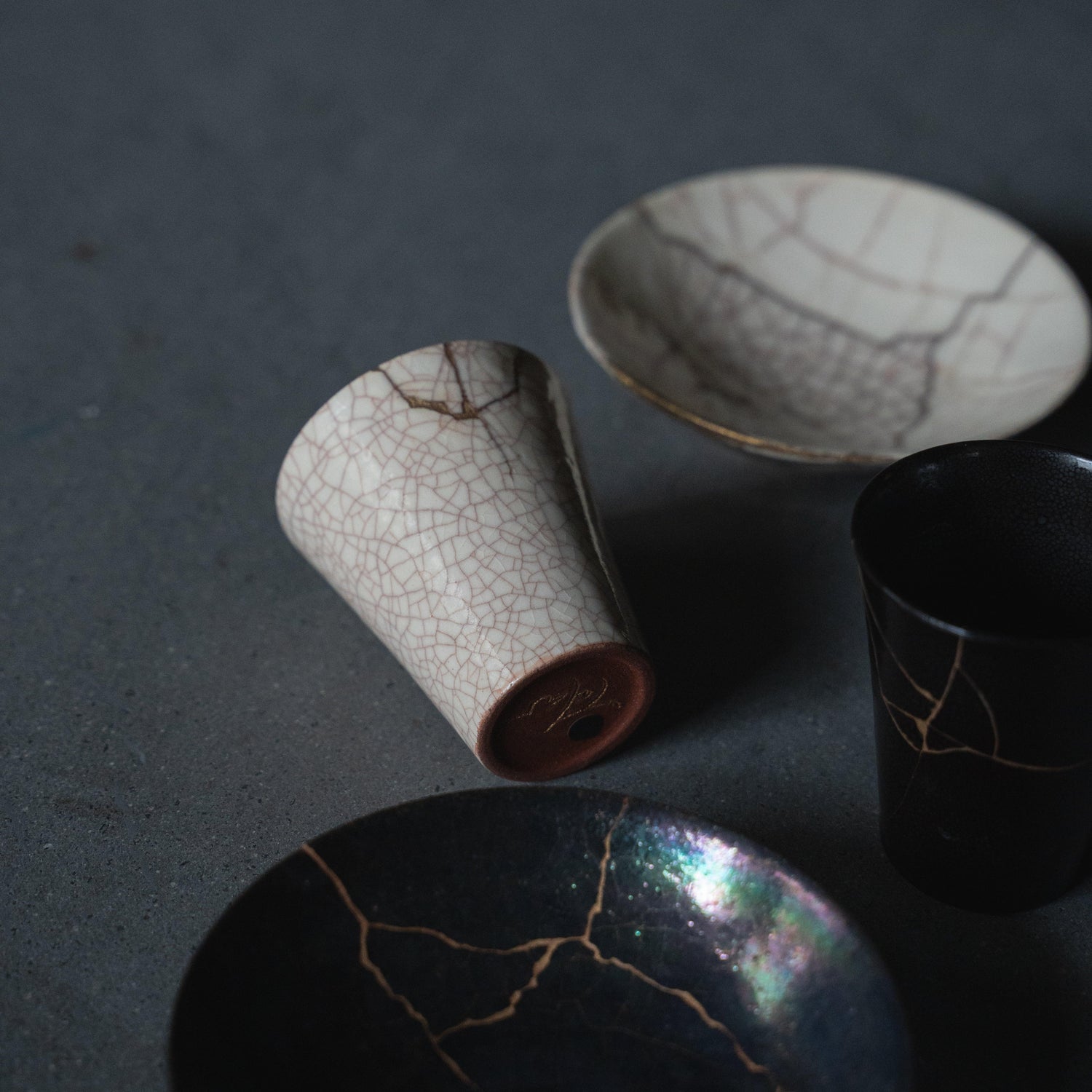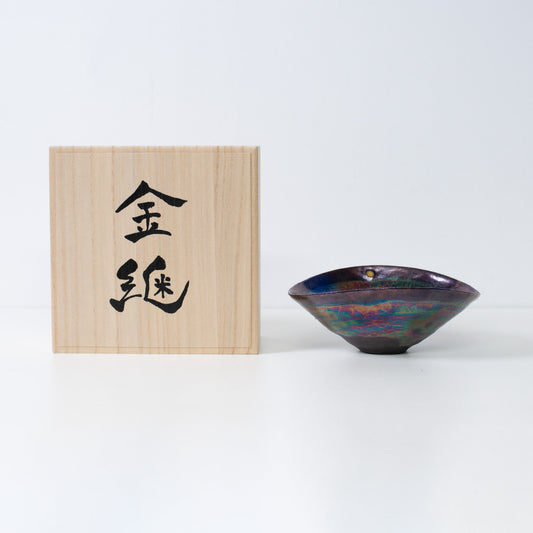
The Kintsugi Experience: Transforming Broken Pottery into Art in Tokyo
Share
At the studio of Taku Nakano, a globally renowned Kintsugi artist located in Tokyo's Omotesando, authentic Kintsugi experiences are offered in English. This article introduces Taku Nakano, a master of Kintsugi, and the Kintsugi experiences he provides.
Table of contents
The Essence of Kintsugi: A Unique Japanese Tradition
Kintsugi, or "golden joinery," is a uniquely Japanese traditional technique for beautifully restoring broken pottery. The widespread adoption and continuation of this technique are thought to be rooted in Japan's history and culture, frequently afflicted by natural disasters. The Japanese value overcoming adversity and emerging stronger and more beautiful, a spirit reflected in kintsugi. It aims not merely to repair but to restore an item to a state even more robust and beautiful than its original.
This practice is underpinned by the aesthetics of "wabi-sabi" teaching the beauty that evolves over time and the acceptance of cracks and imperfections. Through the spirit of "mottainai," a respect for objects and a culture of recycling have been nurtured. Kintsugi embodies the philosophy that objects and life deserve a second chance and can shine brighter after overcoming adversity.
Kintsugi Lessons in Minami Aoyama
In the heart of the Minami Aoyama district, a studio offers experience lessons in the art of kintsugi. With a small group of no more than ten people, participants don traditional craftsman's work clothes, "samue" and learn the techniques of kintsugi in approximately one-hour lessons. This experience allows participants to reappreciate the value of objects by repairing broken pottery with a mixture of lacquer and gold, deepening their understanding of Japanese culture and philosophy. The lesson fees start from ¥9,000 per adult, including tuition, a souvenir, and all necessary equipment. By the end of the lesson, participants will take home a unique souvenir, gaining a new perspective on the value of objects.
Taku Nakano: A Modern Maestro of Kintsugi
Taku Nakano is a unique potter who runs a ceramics class in Omotesando, known for combining traditional Japanese techniques with modern design. His studio houses numerous kintsugi works created from his unique perspective. Nakano's work goes beyond mere restoration, aiming to make the pottery more beautiful and sturdy than before. As a master of kintsugi, he bridges culture beyond craftsmanship, such as creating symbolic works blending Georgian wine culture with Japanese kintsugi on commission from the Georgian government. Nakano's innovative approach and teachings have garnered attention from ceramics enthusiasts worldwide, playing a role in elevating the global appreciation of kintsugi and Japanese pottery. The Nikkei has dubbed his method "a new wave in traditional crafts," impacting over 2,000 individuals, including notable figures.
Nakano's kintsugi collection transcends mere pottery restoration. His works utilize rare materials, including precious metals, glass, and natural lacquer, inspired by the universe and celestial bodies. These pieces carry a cultural message and deep philosophy through kintsugi, holding contemporary relevance as sustainable practices.
Experiencing Nakano's Philosophy: The Kintsugi Workshop
The kintsugi experience in his studio offers not just technical learning but a rare opportunity to directly experience his aesthetics and philosophy. Participants, under Nakano's guidance, repair broken pottery with their own hands, contemplating the value and beauty of objects and the rejuvenation of life in the process.
Thus, the kintsugi experience in Tokyo is more than just a hobby class. It represents a cultural exploration where Japanese tradition and modern sensibilities merge, providing participants with an unforgettable experience. Nakano's kintsugi collection and his studio experiences serve as a gateway to learning about Japan's beauty and craftsmanship and a new way of seeing objects.

















